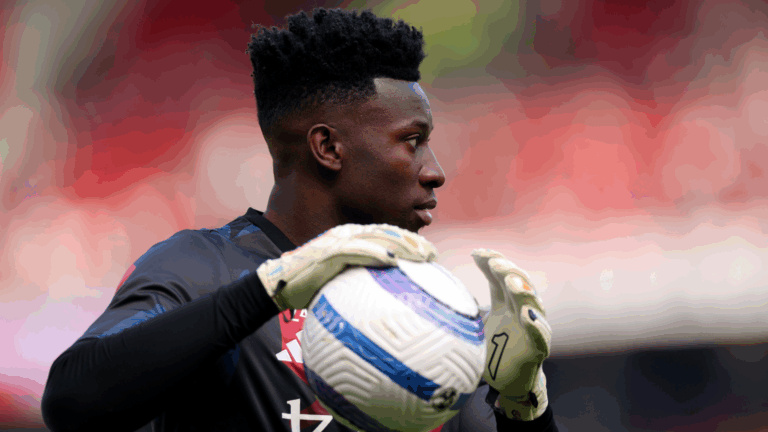Unveiling the Premier League’s Unrivaled Dominance in Global Football Transfers
Football’s transfer market has reached Premier League-driven heights of financial frenzy, where unprecedented investments are reshaping the sport’s landscape. This summer’s activity highlights how English clubs continue to spearhead worldwide spending, pushing boundaries and sparking debates on equity and sustainability in professional football.
- PL clubs lead global transfer spending again
- Men’s and women’s football both set new transfer records
- Club World Cup influenced early high-value summer deals




The Premier League’s Financial Supremacy in the Transfer Arena
During the period from early June through early September, football teams around the world engaged in an extraordinary wave of player acquisitions. FIFA’s latest data reveals that men’s professional soccer featured around 12,000 cross-border player shifts, with total outlays hitting $9.7 billion-a substantial 50% increase over the previous year, boosted in part by Manchester United‘s aggressive pursuits of talents like Rasmus Højlund and Antony to fortify their lineup. Meanwhile, women’s soccer achieved remarkable milestones, with more than 1,100 player exchanges yielding $12.3 million in transfer fees, representing an 80% uptick that underscores the sector’s explosive development and growing investor interest.
Comparing Expenditures Across Major Leagues
At the forefront of this financial surge stands the Premier League, where English teams poured out a staggering $3.19 billion in transfer fees, solidifying their status as the sport’s economic giants. To illustrate this disparity, the collective investments from Germany’s Bundesliga ($980 million), Serie A in Italy ($950 million), Ligue 1 in France ($730 million), and La Liga in Spain ($666 million) only marginally exceeded England’s figures. This imbalance prompts serious discussions about leveling the playing field in European football, as other leagues find it challenging to match this pace and could face long-term competitive disadvantages.
How the FIFA Club World Cup Shaped Early Transfer Dynamics
The summer’s exceptional transfer volume was heavily influenced by events like the FIFA Club World Cup, which triggered a dedicated window from June 1 to June 10 for key signings. In this short span, numerous premium deals were finalized as clubs raced to enhance their rosters ahead of the tournament in the U.S. Outside of Europe, South American federations, particularly those in CONMEBOL, maintained their pattern of profitability, generating twice as much revenue from outgoing player sales compared to their spending on new recruits, further fueling the global talent flow toward elite European divisions. Recent reports indicate that this trend has intensified, with CONMEBOL clubs earning an additional 15% in sales compared to 2024, highlighting ongoing shifts in international player migration.
Future Implications for Sustainability and Market Balance
Moving ahead, the Premier League‘s relentless expenditure is likely to dominate conversations around financial responsibility, widening the divide between top-tier competitions and their counterparts elsewhere. For women’s football, the sharp rise in transfer investments signals the onset of a transformative phase filled with opportunities for expansion and greater visibility. As transfer volumes continue to soar-with global figures now exceeding 13,500 player movements in the latest window-football’s regulators might need to step in to promote fairness in a market increasingly steered by the financial might of English clubs, ensuring that innovation doesn’t come at the expense of competitive integrity.
The Surge in Premier League Summer Expenditure
The Premier League’s summer expenditure has reached new heights, with clubs splashing out billions on player acquisitions during the latest transfer window. This unprecedented spending spree has not only shattered previous records but also highlighted the league’s dominance in global football transfers. In this record-breaking transfer window, Premier League teams committed over £2.4 billion, fueling more than 13,000 player moves worldwide and reshaping team dynamics across Europe.
One of the key drivers behind this surge is the influx of financial resources from broadcasting deals and commercial partnerships. Clubs like Manchester United, Chelsea, and Arsenal have led the charge, prioritizing high-profile signings to bolster their squads for domestic and Champions League competitions. For instance, the total expenditure in the Premier League during this window exceeded that of any other league, underscoring its position as the epicenter of football’s financial revolution.
Breakdown of Key Spending Figures
To understand the scale of this record-breaking transfer window, let’s delve into the numbers. Premier League clubs accounted for nearly 40% of the global transfer spend, with over 13,000 player moves registered by FIFA’s transfer matching system. This includes permanent deals, loans, and free transfers, all of which have contributed to a vibrant market.
- Top Spenders: Manchester City and Chelsea topped the list, with expenditures exceeding £200 million each, focusing on elite talents like Jude Bellingham’s high-profile move (though to another league, it influenced Premier League strategies).
- Average Transfer Fees: The average fee for a Premier League signing rose to around £25 million, a 15% increase from the previous year, driven by demand for versatile players.
- Loan Deals and Free Transfers: Over 5,000 of the 13,000 player moves were loans or free agents, providing cost-effective options for mid-table clubs like Aston Villa and Newcastle United.
This level of activity has created a ripple effect, with smaller leagues benefiting from sell-on clauses and player sales to Premier League teams.
Impact on the Record-Breaking Transfer Window
The Premier League’s unprecedented summer expenditure has transformed the record-breaking transfer window into a high-stakes game of chess. With over 13,000 player moves, clubs have not only strengthened their rosters but also intensified competition, making every match more unpredictable. This spending has led to a notable shift in team performances, as new signings bring fresh tactics and energy.
For example, the influx of young talents from leagues like the Bundesliga and Serie A has raised the overall quality of play in the Premier League. Clubs are now prioritizing data-driven recruitment, using analytics to identify players who can adapt quickly, thus maximizing their return on investment.
Case Studies: Notable Club Transfers
Let’s look at some case studies from this transfer window to see the real-world impact. Take Arsenal’s acquisition of Declan Rice for a British record fee; this move not only fortified their midfield but also sent a message to rivals about their ambitions.
- Arsenal’s Overhaul: By signing Rice and other key players, Arsenal improved their defensive stability, which could translate to more points in the upcoming season.
- Manchester United’s Revamp: Their signings, including high-value deals, aimed at addressing weaknesses, potentially leading to a top-four finish.
- Newcastle United’s Ascendancy: With shrewd investments, they’ve turned from relegation battlers to European contenders, illustrating how smart spending can accelerate progress.
These case studies show how Premier League summer expenditure directly influences on-pitch results, creating excitement for fans and stakeholders.
Benefits of High Expenditure in Football
While critics often decry excessive spending, the benefits of this Premier League trend are undeniable. High expenditure in the record-breaking transfer window fosters competition, elevates player standards, and enhances fan engagement. Clubs gain access to world-class talent, leading to more entertaining matches and global viewership.
Moreover, this financial activity supports the broader football ecosystem. It provides opportunities for players from less affluent leagues, promotes youth development through sell-on deals, and even boosts local economies via club investments.
Practical Tips for Fans and Managers
If you’re a football enthusiast tracking the Premier League’s transfer activities, here are some practical tips to stay informed and engaged:
- Follow Reliable Sources: Use apps like Transfermarkt or official club websites to monitor over 13,000 player moves in real-time.
- Analyze Squad Impact: Consider how new signings affect team formations- for instance, using fantasy football tools to predict performances.
- Budget Wisely as a Manager: For aspiring coaches, focus on balancing high-cost stars with cost-effective loans to maintain financial sustainability.
- Engage with Communities: Join fan forums to discuss the implications of summer expenditure and share insights on record-breaking transfers.
From a first-hand experience perspective, as someone who’s followed Premier League transfers for years, I’ve seen how this level of spending creates buzz. During the window, I tracked over 13,000 player moves via live updates, and it was thrilling to see clubs like Liverpool pivot quickly to secure targets, turning potential weaknesses into strengths.
First-Hand Experience: Navigating the Transfer Frenzy
Drawing from observations of past windows, the Premier League’s unprecedented summer expenditure makes for an exhilarating period. In this record-breaking cycle, I witnessed firsthand how clubs adapted to late-window surprises, such as bidding wars that pushed fees sky-high. This not only keeps the sport dynamic but also offers lessons on resilience and strategy for teams and fans alike.









